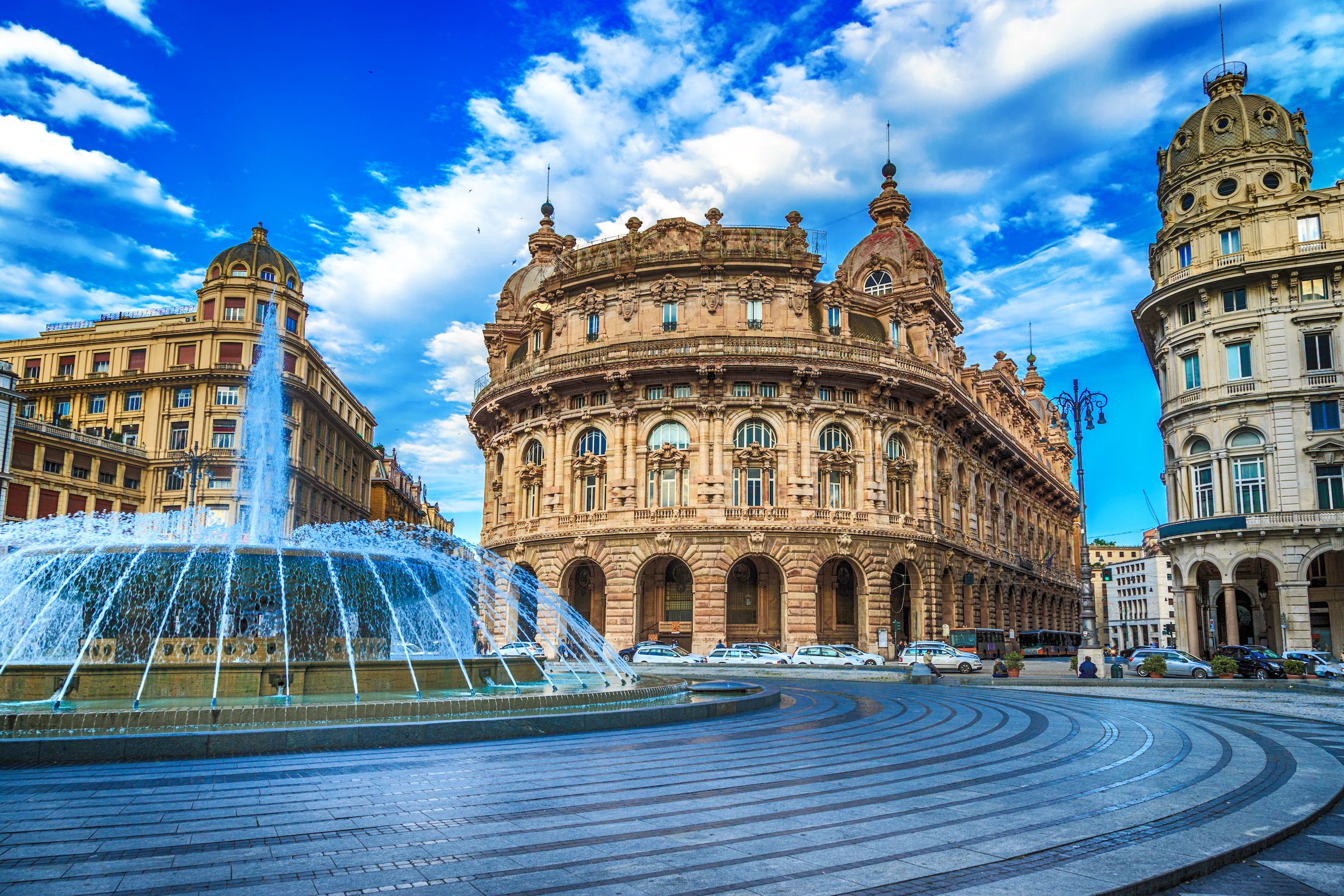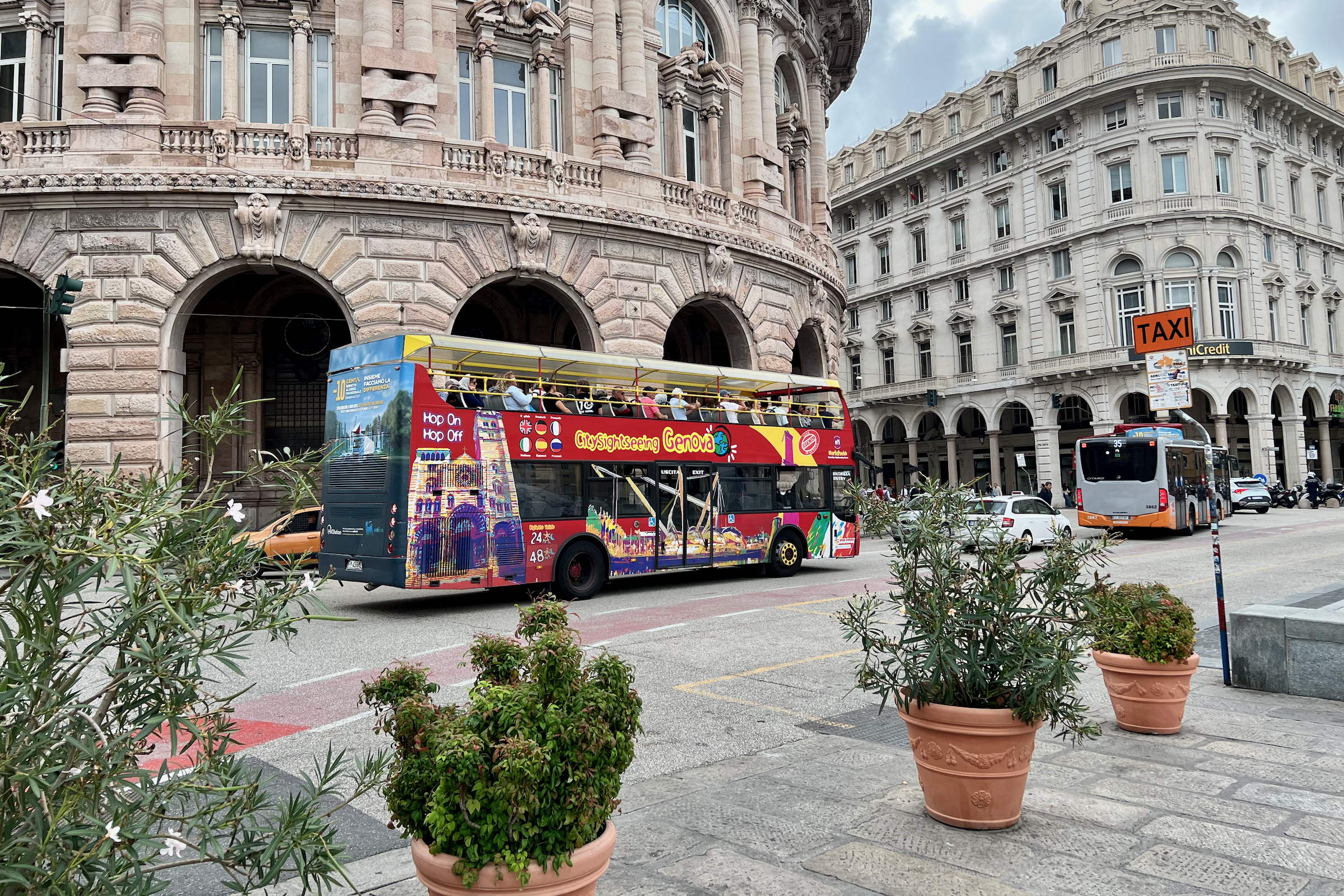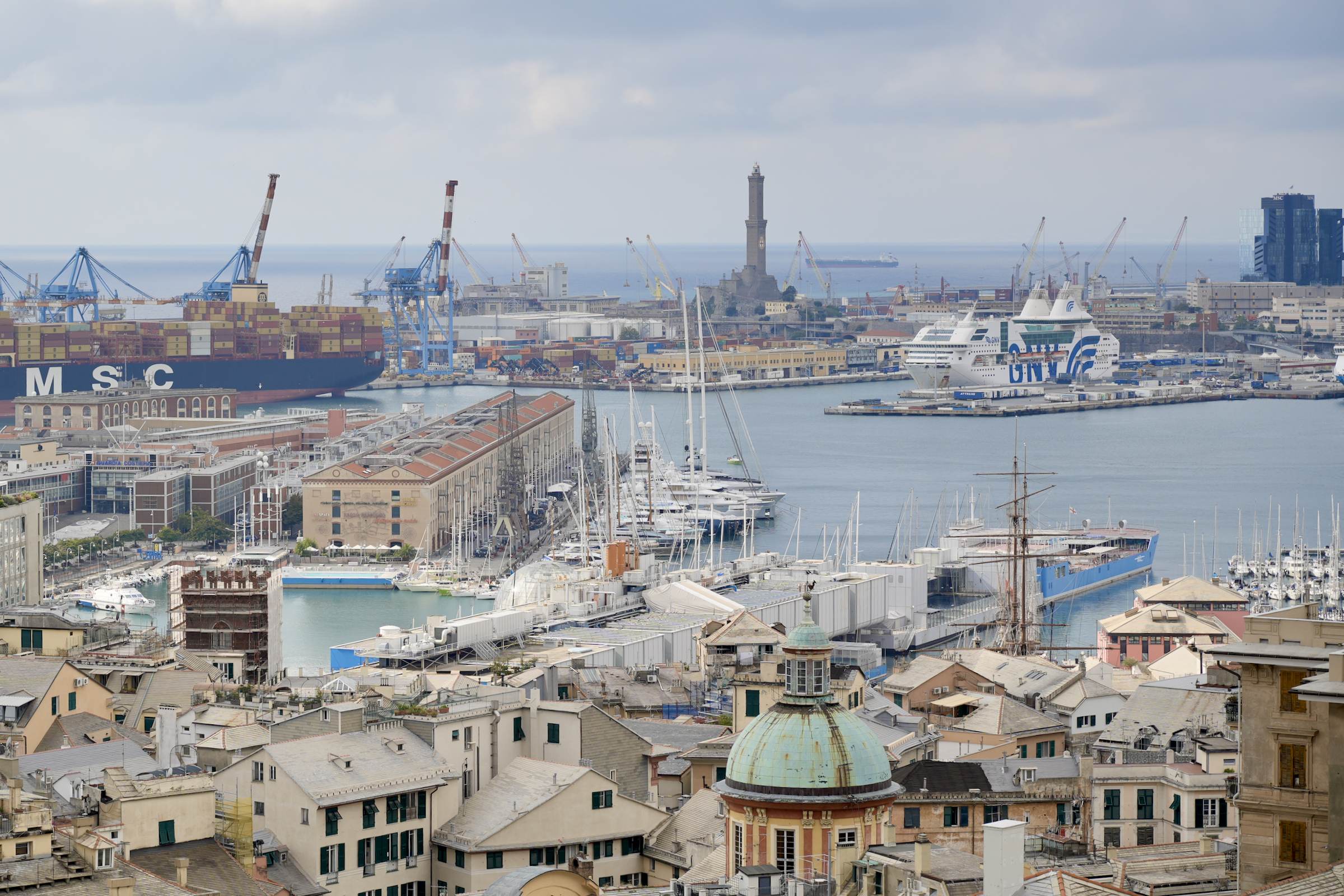Cathedral San Lorenzo
Near the Porto Antico, the tourist port of Genoa, lies the Cathedral of San Lorenzo. With its characteristic façade, it shines for miles and is a special attraction for travellers from all over the world. The construction was started around 1100, consecrated around 1118 - but it was not finished until the 15th century. Accordingly, both Romanesque and Gothic features can be found.

Characteristic facade
Black and white columns inside give the cathedral its special atmosphere. Both the façade and the interior are characterised by this. Numerous paintings on the walls and ceiling are worth seeing: an unknown Byzantine artist created frescoes here around 1300, and others have been added over the centuries. For example, frescoes by Luca Camiaso on the vault of the left aisle, or on the right one by Lazzaro Tavarone from the 17th century.
An organ can also be admired, it dates back to 1936. During its construction, material from previous organs was reused. There is evidence of organs in the Cathedral of San Lorenzo dating back to 1391. The present organ was restored in the early 2000s.
Sculptures by important Renaissance artists
Equally worth seeing are the many sculptures that decorate the interior of the impressive church. Romanesque and Gothic sculptures dating back to the 11th century can be seen in the cathedral. They guard the entrances at the main portals as well as at the San Giovanni portal and the San Gottardo portal. There are also statues in the San Giovanni Chapel, by the Swiss-Italian sculptor of the early Renaissance, Domenico Gaggini, and by Matteo Civitali, who also lived in the 15th century.
A long history
Dedicated to San Lorenzo, the cathedral has a long history. Probably as early as the 5th or 6th century, a first cathedral of Genoa stood here, dedicated to Bishop San Siro, who presided over the bishopric at that time. Roman walls were discovered during excavations - under the stone pavement around the cathedral and under the square in front of the current façade of the Chiesa di San Siro. Pre-Christian sarcophagi were also found, indicating that there must have been a cemetery on the site.
Changes over the centuries
Blessed by Pope Gelasius II in 1118, the cathedral received archiepiscopal rank in 1133. At the end of the 13th century, it was damaged by fire during battles between Ghibellines and Guelfs. It was restored between 1307 and 1312, and the façade was also completed. In the following centuries numerous chapels and altars were built. Changes continued until the 17th century, including the addition of the loggia to the northeast tower in 1455, and the one opposite almost a hundred years later. In 1550, the architect Galeazzo Alessi was commissioned to restore the cathedral.
In any case, the cathedral is worth seeing during a visit. The changes can be seen in the different architectural styles and the many elements. Thus, it is an impressive testimony to the history of the city.




